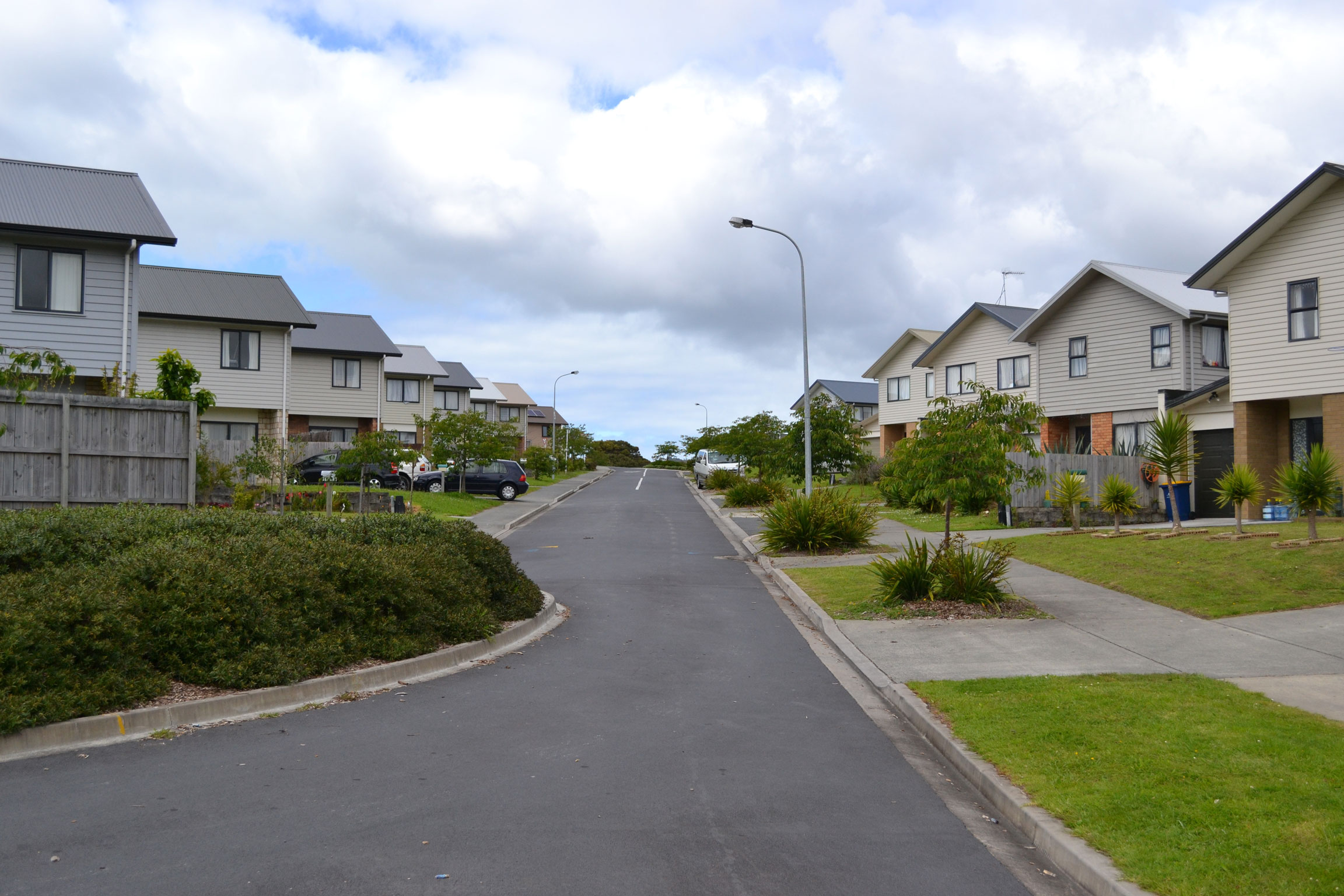Nicola Patrick talks with GM Dominic Foote
The following Case Study featuring Dominic Foote forms one part of Financing the Future, our dynamic content project exploring the market opportunities for impact investment in Aotearoa New Zealand. The project is produced by Pure Advantage and promoted in association with the Impact Investing National Advisory Board Aotearoa New Zealand the Responsible Investment Association of Australasia. Access the full project here.
Housing Foundation: Building homes and building communities
Assisting New Zealanders into their own secure, stable and healthy home is at the heart of the Housing Foundation’s mission. A charitable social enterprise housing trust, they provide affordable partnership-based options for people to become independent homeowners and build strong communities while delivering financial returns to investors and reinvesting in new housing projects. Dominic Foote, the Housing Foundation’s General Manager: Operations, explains.
What was the original goal of the venture?
The Housing Foundation’s original concept was to help other organisations deliver affordable housing, but we quickly realised we needed to demonstrate it ourselves.
Our goal remains to provide housing for low income, working families trapped in rental accommodation and unable to transition to their own homes due to debt, income, being unable to save a deposit, or other factors.
We started in 2006 by trialing our new ‘Affordable Rental to Ownership’ and ‘Shared Owners’ products with a small number of houses, in order to demonstrate they would work and be accepted by banks and households. Our first major project was just off West Coast Road on the edges of Glen Eden. We obtained a resource consent to develop 73 houses with 49 set aside for the foundation and 24 for a mix of other community providers and private investors leasing to Housing NZ.
The thing about families trapped in renting, particularly low income households, is they have unsustainable rental tenure – they don’t know when their landlord is going to renovate, demolish or increase the rent until it’s unaffordable for them.
Our solution is two core products at present. Our shared ownership model is where a family can afford more than 60 percent of a purchase price and the foundation owns the rest. The second is an affordable rental where, over a five-year period, a family rents from the foundation while they receive financial planning assistance to reduce debt and save a deposit to buy into the shared ownership model.
[aesop_image img=”https://pureadvantage.org/wp-content/uploads/2018/11/WCR1.jpg” panorama=”off” align=”center” lightbox=”on” captionposition=”left” revealfx=”off” overlay_revealfx=”off”]How was the investment structured, who were the investors?
The catalyst was the Tindall Foundation who wanted a step change in affordable housing. They invested several million dollars in the form of a low interest loan to enable the development and construction of the original 73 houses in the West Coast Road development. It was structured on the basis the land was purchased and developed by the Housing Foundation for affordable housing with a certain percentage of the houses being supplied as rent to own and shared ownership.
In the beginning, it wasn’t impact investment as such – it was a combination of philanthropic organisations and Government funding – but it was a good model. Now it is clearly impact investment delivering a good return, both financially, albeit below standard commercial returns, and recirculating funding to future housing projects.
What challenges were faced in securing the deal?
The key issue is always finding partners that are prepared to invest without requiring traditional commercial returns, as the Housing Foundation cannot pay investors a market dividend from its affordable housing portfolio.
How were these challenges overcome?
The Tindall Foundation were motivated partners. They were happy with the commercial agreement and confident in the proof of concept. The arrangement between The Tindall Foundation and Housing Foundation was set out in a financial agreement with agreed affordable housing outcomes incorporated.
In terms of satisfying wider investors, they need patience and to take a long-term view. They are also reliant on how the housing market goes. If the market drops, it is their risk. However, generally the housing market rises.
What would you do differently next time?
We need a model that works well for philanthropic organisations or high net worth individuals who want to leave a legacy. That means we need to consider a mix in our affordable housing portfolio that offers investors a blended yield, recognising it will be below market yield. However, we believe a blended investment model could be attractive to a wider range of investors.
We’re looking to how we can support other communities with lower incomes and lower priced housing. It is part of our kaupapa to grow – we want to replicate this model to other places.
What impact has been achieved?
For West Coast Road, more than 30 families have moved into full ownership. It gives them stability, roots, permanence. They can focus on their jobs and school. They have economic growth in their families, they get used to financial management and planning, and they can take on a bit more – take more control of their lives and remove the stress of rental uncertainty.
Overall, we’ve built more than 750 houses with 130 households progressing to full ownership and 280 households being in our assisted ownership programmes.
For the foundation, the key benefit (other than providing affordable housing) is that the funding is recycled as equity into new affordable housing. This is achieved when the household buys more equity from the Housing Foundation, the purchase is always at the current market price of their home. As the family buys more of their home over time, the foundation is able to recycle the equity freed up into another affordable home or affordable housing development. Our approach of recycling funds invested in our shared ownership homes demonstrates that we can build a succession of houses, building on the initial investment.
We have designed qualitative surveys to follow up every three years to understand what else is happening for these families and the community. Some have sold to the open market, so the make-up of the community changes. We want to track the value of the strength and connectivity of the community.
|
At a glance
|
 Dominic Foote is the General Manager Operations for the New Zealand Housing Foundation. Responsible for the operational growth and day to day operations of the Housing Foundation, and with a particular focus on delivery of developments, contractor performance, management of households, community group support, securing capital funding for developments and equity funding for affordable housing products, overseeing household management and transitioning of households from renting to ownership tenures, and promoting Housing Foundation activities.
Dominic Foote is the General Manager Operations for the New Zealand Housing Foundation. Responsible for the operational growth and day to day operations of the Housing Foundation, and with a particular focus on delivery of developments, contractor performance, management of households, community group support, securing capital funding for developments and equity funding for affordable housing products, overseeing household management and transitioning of households from renting to ownership tenures, and promoting Housing Foundation activities.



Leave a comment